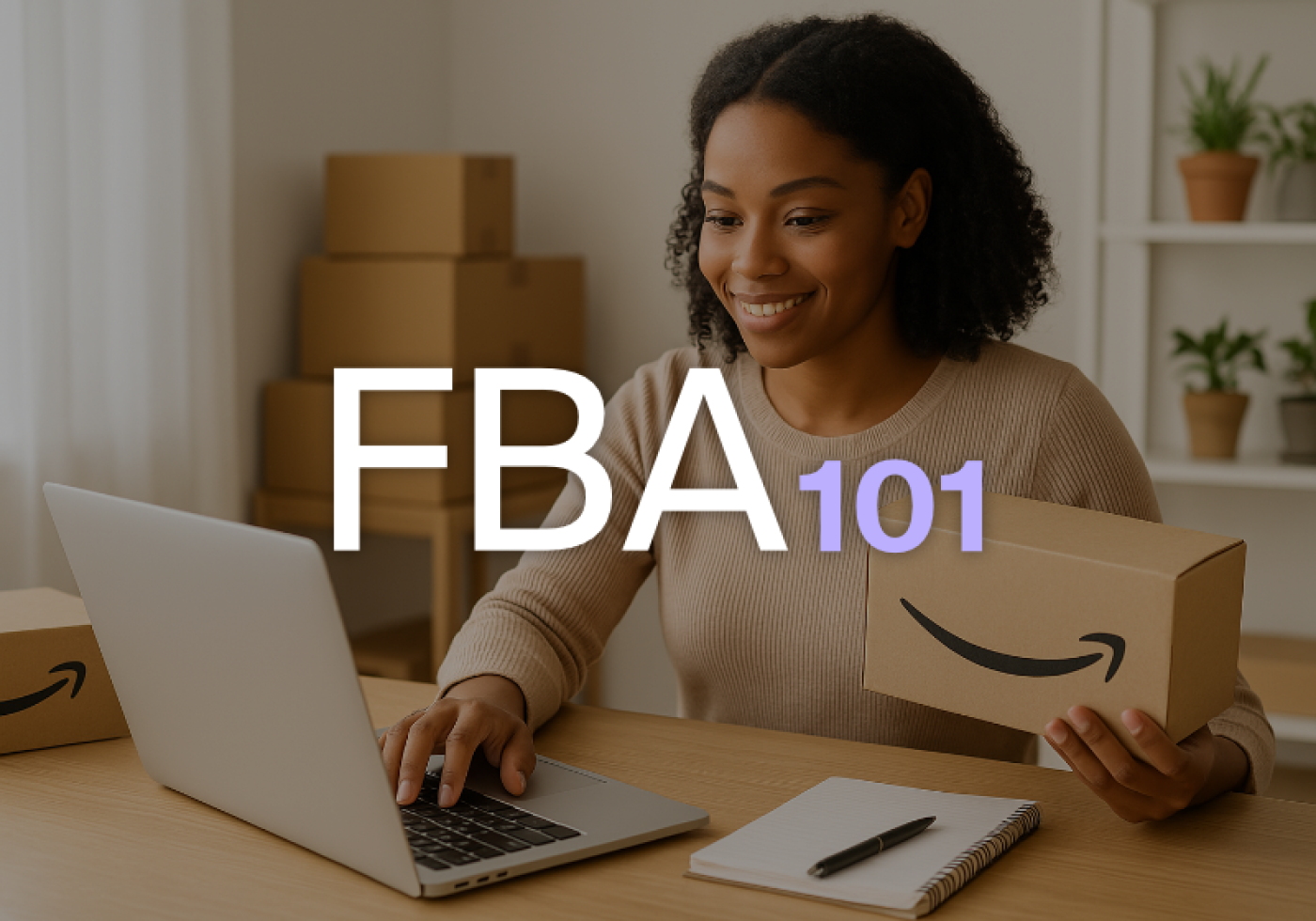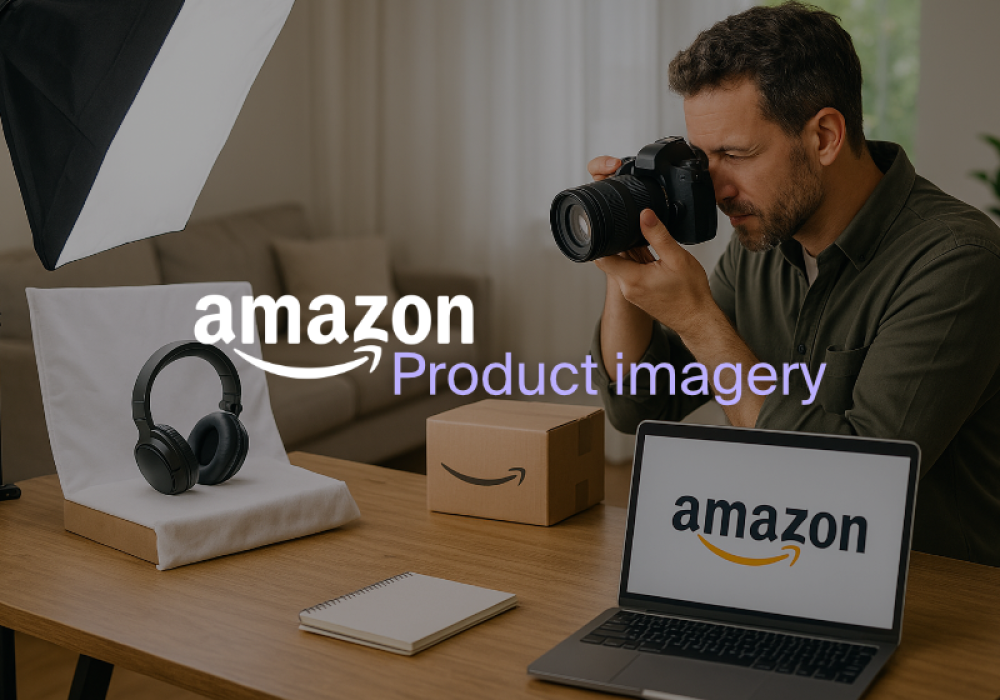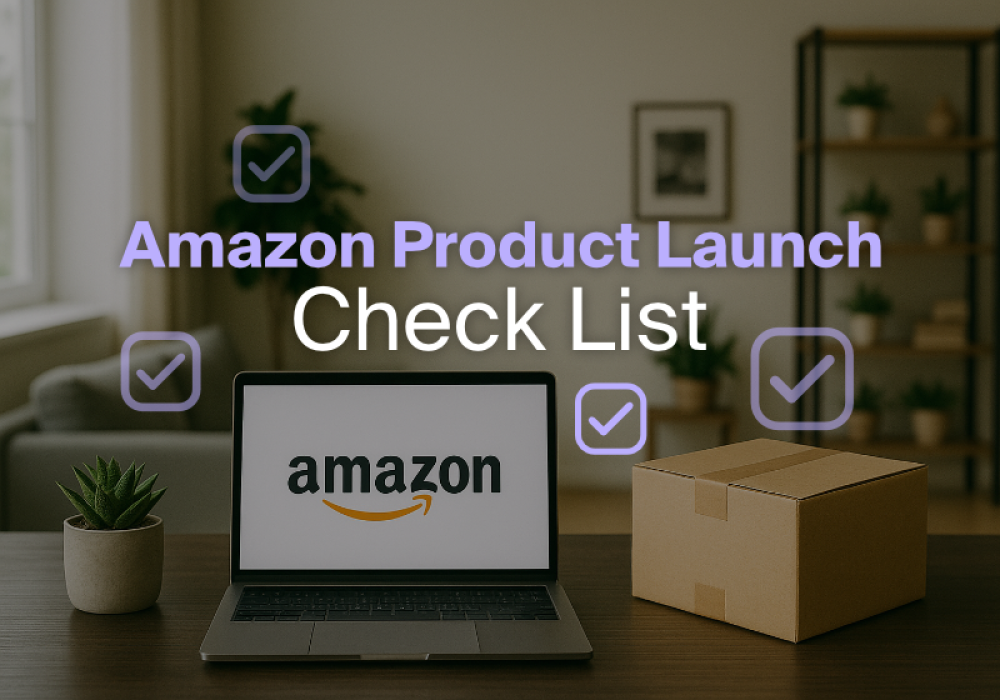Amazon FBA is one of the most accessible ways to start an ecommerce business. With millions of active shoppers and an infrastructure that handles logistics, customer service, and fulfilment, Fulfilment by Amazon (FBA) makes it possible for sellers to focus on sourcing and selling products while Amazon takes care of the rest.
But to succeed on Amazon, you need more than just an idea—you need a clear roadmap. This beginner’s guide walks you through the full Amazon FBA process: what FBA is, how to create your account, choose the right products, ship inventory to Amazon’s fulfilment centres, and grow your business with the right tools. If you're new to selling online, this guide is your step-by-step introduction to launching a sustainable business on Amazon.
What is Amazon FBA?
Fulfilment by Amazon (FBA) is a service where Amazon stores your inventory, picks and packs customer orders, ships the products, and handles customer service and returns. As a seller, you simply send your products to Amazon’s fulfilment centres, and they take care of the rest.
This model has become the preferred choice for many new sellers because it removes much of the operational workload. FBA also gives you access to Amazon Prime customers—buyers who expect fast, reliable delivery. These customers are more likely to purchase products that offer Prime shipping, which means FBA can directly improve your sales performance.
Why choose FBA as a beginner?
FBA is especially suited to new sellers for a few key reasons:
- Low barrier to entry: You don’t need your own website, warehouse, or staff.
- Built-in trust: Customers are more confident buying from FBA listings because Amazon handles fulfilment and support.
- Scalability: As your sales increase, Amazon’s systems scale with you—there’s no need to expand your own operations.
- Time-saving: You can spend more time on sourcing and marketing, not packing boxes or answering shipping queries.
Step 1: Setting up your Amazon Seller Central account
To start selling, you’ll need an Amazon Seller Central account. You can choose from two selling plans:
- Individual Plan: No monthly fee, but you pay $0.99 per item sold. Best for sellers testing the platform or with low volume.
- Professional Plan: $39.99/month, with no per-item fee. Recommended if you plan to sell more than 40 items per month or want access to advanced tools like advertising and bulk listings.
During setup, Amazon will ask for:
- Your business/legal name
- Email address and phone number
- Bank account details for deposits
- Tax information (e.g. U.S. EIN or UK VAT depending on your location)
Once approved, you’ll have access to Seller Central—your control panel for managing listings, inventory, orders, and reports.
Step 2: Understanding Amazon FBA and enrolling
After account setup, you need to enrol in FBA. This is a one-time step where you tell Amazon you want them to handle fulfilment for your products.
To do this, go to Settings > Fulfilment by Amazon in Seller Central, and follow the prompts to register for FBA. Once active, any product you list can be set as “FBA” inventory during listing creation.
With FBA:
- You send products to Amazon’s warehouse.
- Amazon stores the items until a customer places an order.
- They pick, pack, ship, and manage all customer interactions.
Step 3: Creating and optimising your product listings
Your product listing is the online version of your storefront. A great listing improves both visibility and conversions. Each listing includes:
- Title: Include brand, key features, and relevant keywords (up to 200 characters).
- Bullet points: Highlight 4–5 benefits or features clearly.
- Images: Upload high-quality images (white background, lifestyle photos, multiple angles).
- Description: Provide a more detailed explanation of the product’s value, use cases, and features.
- Keywords: Add backend keywords to help your product appear in search.
Good listings lead to more sales, and more sales lead to higher rankings.
Step 4: Preparing your products for FBA
Amazon has specific guidelines for how products must be packaged and labelled before they’re sent to fulfilment centres. You’ll need to:
- Use appropriate packaging (boxes, poly bags, bubble wrap)
- Apply FNSKU barcodes to each item (Amazon’s unique product label)
- Group quantities correctly if selling in multipacks or bundles
- Follow safety requirements for fragile, hazardous, or temperature-sensitive items
You can choose to label and prep items yourself, or pay Amazon’s FBA Prep Service to do it for you (for a fee per unit).
Step 5: Shipping to Amazon
Once your inventory is ready, go to Seller Central to create a shipping plan. This will tell Amazon:
- What products you’re sending
- How many units of each
- How they’re packed (individual units or case-packed)
- Which carrier you’re using (UPS is often integrated directly for discounted shipping rates)
Amazon will then generate shipping labels and route your inventory to one or more fulfilment centres. Once received, your products will be live and ready for sale.
Step 6: Managing inventory and monitoring performance
Once you’re up and running, inventory management becomes critical. This is where new sellers often run into trouble—running out of stock too soon, or storing too much and incurring fees.
To stay on top of your inventory and avoid stockouts, tools like Amzigo give you real-time data across your listings and marketplaces. Within Amzigo’s Product Analysis section, you can:
- View how many days of inventory you have left for each product
- See recommended restock levels based on current sales trends
- Monitor conversion rates to understand what’s performing
- Track units sold, orders received, and market-specific sales trends
- Get alerts when inventory hits critical low points
This visibility is crucial for making informed decisions and avoiding profit-draining mistakes like overstocking or running out during high-demand periods.
Step 7: Understanding Amazon FBA fees
There are several types of FBA fees you’ll need to be aware of:
- Fulfilment Fees – Charged per unit for picking, packing, and shipping. Based on weight and dimensions.
- Monthly Storage Fees – Charged per cubic foot of inventory stored in Amazon’s warehouses.
- Long-Term Storage Fees – Applied to inventory stored over 365 days.
- Referral Fees – A commission taken from each sale (usually 8–15% depending on category).
- Returns Processing Fees – For certain categories where free returns are expected.
Always calculate your margins after these costs. Pricing low might increase sales, but it’s no help if you’re not profitable.
Step 8: Staying compliant and building trust
Amazon has strict rules around customer communication and review requests. Avoid sending messages that offer incentives or ask for positive reviews. Use only approved methods like Amazon’s built-in “Request a Review” feature—or trusted tools like Amzigo’s Automated Review Centre, which sends 100% compliant review and feedback requests automatically.
Keeping customer trust high and reviews flowing is essential for long-term growth. Sellers who play by the rules build better reputations, win more Buy Box placements, and earn more over time.
Conclusion
Starting your Amazon FBA business is about more than opening an account and listing products. It’s about mastering the basics, choosing the right fulfilment model, and using the right tools to stay ahead. FBA allows you to scale quickly without worrying about shipping or storage, but success still comes down to planning, pricing, and performance.
If you’re serious about growing your Amazon business, platforms like Amzigo are designed to help sellers make smarter decisions—from managing inventory and reviewing performance, to automating review requests in a compliant, scalable way.
Learn the fundamentals now, and the path to long-term Amazon success becomes much clearer.
Looking to take your Amazon business to the next level?
Discover how Amzigo's advanced features, like our Automated Review Centre, Product Analysis, and Inventory Management, can transform your selling experience. Check out our features and try it for free!



